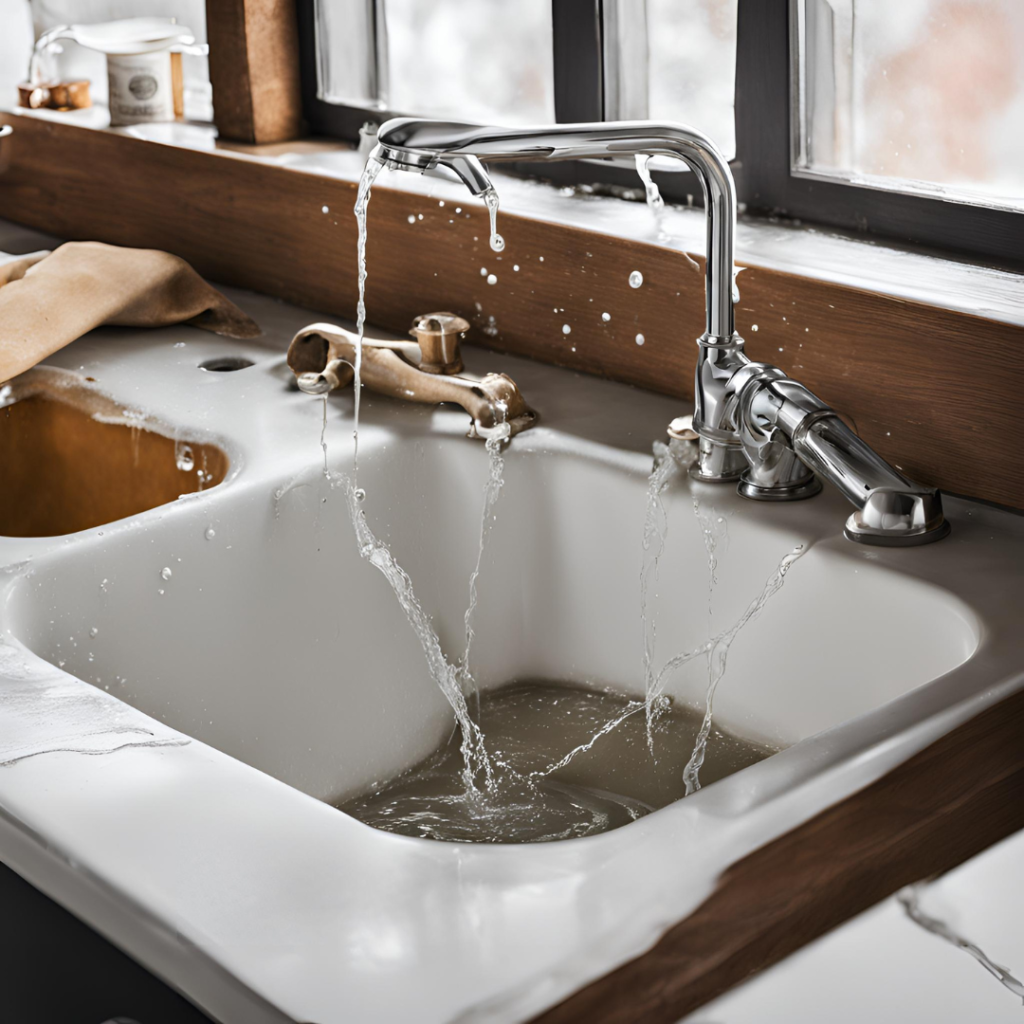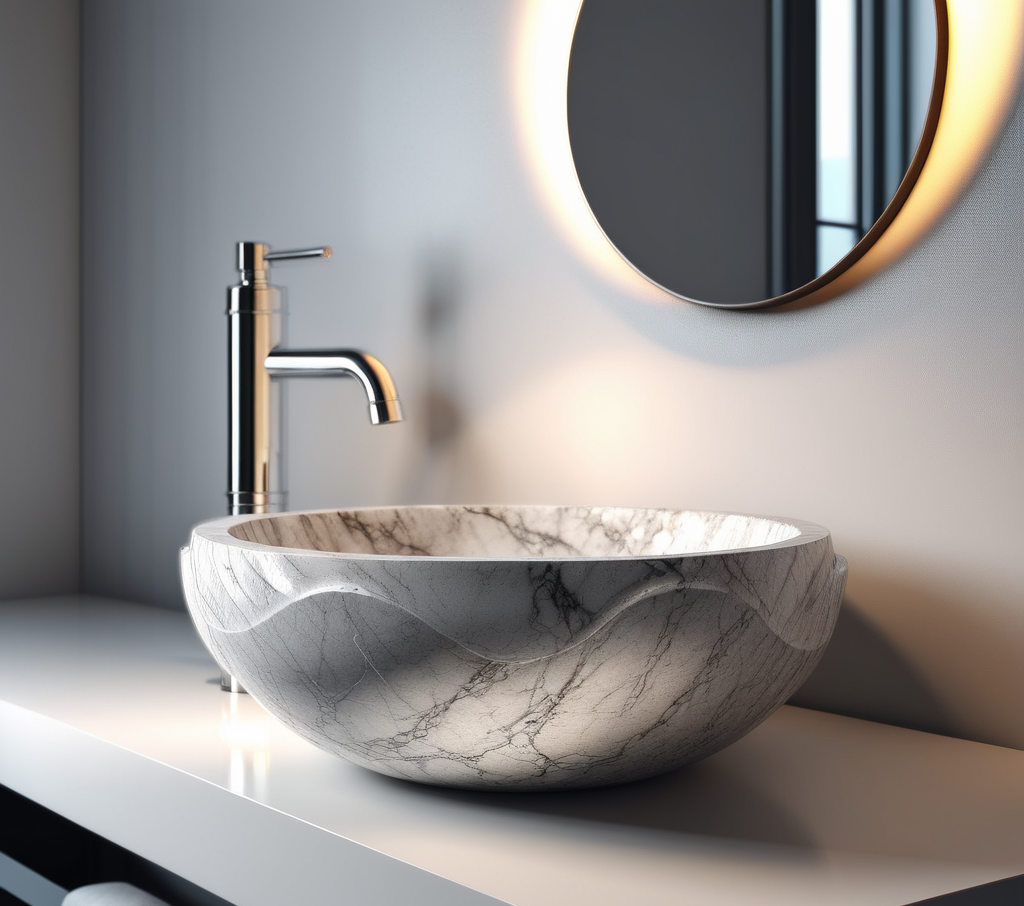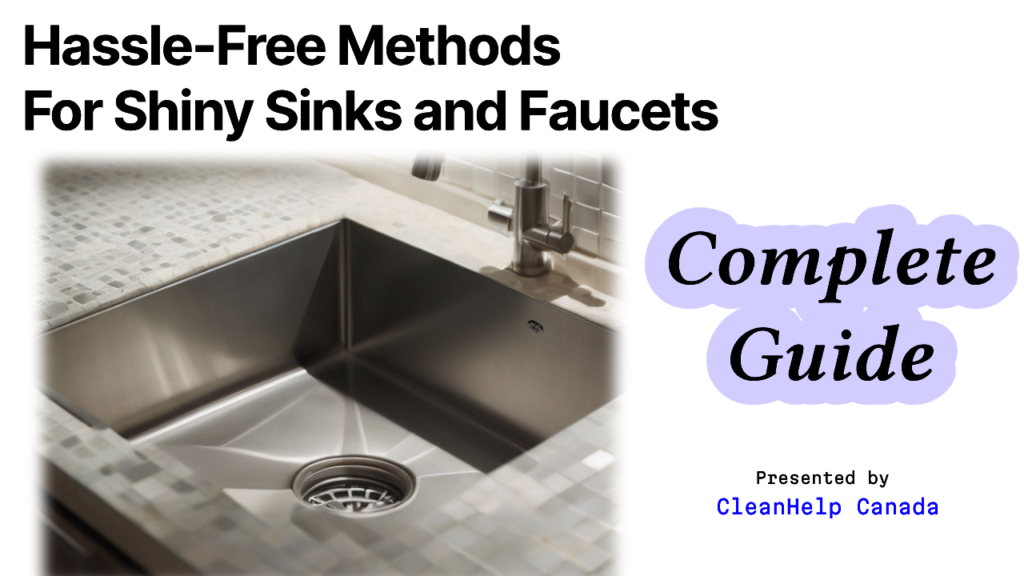Maintaining a clean and sparkling sink and faucet is essential for a healthy and aesthetically pleasing home. This comprehensive guide provides professional cleaning tips and techniques that are easy to follow and perfect for households across Canada.
Whether you are dealing with stubborn stains, mineral deposits, or just everyday grime, CleanHelp Canada is here to help you achieve spotless results.
Why Clean Sinks and Faucets Matter?
A clean sink and faucet not only improve the appearance of your kitchen or bathroom but also contribute to better hygiene. Sinks are a hotspot for bacteria, mold, and mildew, which can lead to unpleasant odors and potential health risks. Regular cleaning helps prevent the buildup of harmful germs and ensures your sink and faucet are safe for daily use.
What Makes Sinks and Faucets Dirty?

Sinks and faucets are frequently used, making them prone to accumulating dirt and grime. Here are some common culprits:
- Food Particles: Food scraps and grease from washing dishes can stick to the sink and faucet.
- Soap Scum: Residue from soap and detergents can build up over time.
- Hard Water Deposits: Minerals in hard water can leave limescale and mineral deposits.
- Bacteria and Mold: Moist environments like sinks are ideal breeding grounds for bacteria and mold. Click Here to know how to remove mold.
- General Debris: Everyday use results in the accumulation of hair, dirt, and other debris.
How Often to Clean Sinks and Faucets?
For optimal cleanliness and hygiene, it’s important to clean your sinks and faucets regularly:
- Daily: Wipe down the sink and faucet with a damp cloth to remove daily dirt and water spots.
- Weekly: Perform a thorough cleaning, including scrubbing the basin and removing any mineral deposits.
- Monthly: Deep clean to tackle any buildup of hard water deposits and disinfect the surfaces.
Essential Cleaning Supplies
Before you start cleaning, gather the necessary supplies:
- Microfiber cloths
- Soft-bristled brush or old toothbrush
- Baking soda
- White vinegar
- Dish soap
- Lemon
- Hydrogen peroxide
- Rubber gloves
- Spray bottle
- Soft sponge
- Clean, dry towels
Step-by-Step Cleaning Guide
1. Empty and Rinse the Sink
Begin by removing all items from the sink, including dishes, soap dispensers, and drain stoppers. Rinse the sink with warm water to remove loose debris and surface grime.
Expert Tip:
Use warm water: It helps loosen grease and grime more effectively than cold water.
2. Clean the Sink Basin
For Stainless Steel Sinks:

- Apply Baking Soda: Sprinkle baking soda generously over the sink basin. Baking soda is a gentle abrasive that helps lift stains without scratching the surface.
- Scrub with a Soft Sponge: Using a soft, damp sponge, scrub the sink in circular motions, paying extra attention to stubborn stains and areas around the drain.
- Rinse Thoroughly: Rinse the sink with warm water to remove baking soda residue.
Expert Tip:
Polish with Olive Oil: After cleaning, apply a small amount of olive oil to a microfiber cloth and buff the sink for a shiny, streak-free finish.
For Porcelain or Ceramic Sinks:

- Use Dish Soap and Baking Soda: Mix a few drops of dish soap with baking soda to create a paste. Apply the paste to the sink basin using a soft sponge or cloth.
- Scrub Gently: Scrub the sink gently to avoid damaging the surface. Focus on stained areas and around the drain.
- Rinse with Warm Water: Rinse the sink thoroughly to remove all cleaning residues.
Expert Tip:
Avoid Abrasive Cleaners: Use non-abrasive cleaners to prevent scratching the porcelain or ceramic surface.
3. Remove Mineral Deposits and Limescale
Mineral deposits and limescale can build up over time, especially in areas with hard water.
- Create a Vinegar Solution: Mix equal parts white vinegar and water in a spray bottle.
- Spray the Affected Areas: Spray the vinegar solution onto the areas with mineral deposits and let it sit for 10-15 minutes.
- Scrub with a Brush: Use a soft-bristled brush or an old toothbrush to scrub the deposits. The acidity of vinegar helps dissolve the minerals.
- Rinse Well: Rinse the sink with warm water to remove any remaining vinegar solution.
Expert Tip:
Use a Toothbrush: For hard-to-reach areas around the faucet and drain, use an old toothbrush to scrub away stubborn deposits.
4. Clean and Shine the Faucet
For Chrome and Stainless Steel Faucets:
- Apply Dish Soap: Dampen a soft cloth with warm water and add a drop of dish soap.
- Wipe the Faucet: Wipe down the faucet with the soapy cloth, focusing on areas with water spots and fingerprints.
- Rinse and Dry: Rinse the faucet with warm water and dry it with a clean, dry towel to prevent water spots.
Expert Tip:
Buff with Wax Paper: After cleaning, buff the faucet with a piece of wax paper to repel water and prevent future spots.
For Hard Water Stains:
- Use Lemon: Cut a lemon in half and rub it over the faucet. The citric acid in lemon helps dissolve mineral deposits and adds shine.
- Rinse and Dry: Rinse the faucet with warm water and dry it thoroughly.
Expert Tip:
Use Lemon Oil: After cleaning, apply a small amount of lemon oil to a cloth and polish the faucet to enhance shine and provide a fresh scent.
5. Disinfect the Sink and Faucet
Disinfecting your sink and faucet helps eliminate germs and bacteria.
- Use Hydrogen Peroxide: Spray hydrogen peroxide directly onto the sink and faucet surfaces.
- Let it Sit: Allow the hydrogen peroxide to sit for a few minutes to kill bacteria and viruses.
- Rinse and Dry: Rinse thoroughly with warm water and dry with a clean towel.
Expert Tip:
Use Alcohol Wipes: For quick disinfecting, use alcohol wipes on faucet handles and other high-touch areas.
Tips for Maintaining Sparkling Sink and Faucet
- Regular Cleaning: Make it a habit to clean your sink and faucet at least once a week to prevent buildup.
- Wipe Down After Use: After using the sink, wipe it down with a dry cloth to prevent water spots and mineral deposits.
- Use a Sink Grid: Consider using a sink grid to protect the sink basin from scratches and stains.
- Avoid Harsh Chemicals: Avoid using harsh chemicals or abrasive scrubbers that can damage the sink and faucet surfaces.
Expert Tips:
- Use a Soft Cloth: Always use a soft cloth or sponge for cleaning to avoid scratches.
- Prevent Clogs: Use a drain cover to catch food particles and hair, preventing clogs and reducing the need for harsh drain cleaners.
Environmentally Friendly Cleaning Solutions
At CleanHelp Canada, we believe in using environmentally friendly cleaning solutions that are safe for your home and the planet. Here are some eco-friendly alternatives to traditional cleaning products:
- Baking Soda: A natural abrasive that effectively removes stains and odors.
- White Vinegar: An acidic solution that dissolves mineral deposits and kills bacteria.
- Lemon: A natural cleaner with antibacterial properties and a pleasant scent.
- Hydrogen Peroxide: A non-toxic disinfectant that kills germs and whitens surfaces.
Expert Tip:
DIY All-Purpose Cleaner: Mix equal parts water and vinegar in a spray bottle, add a few drops of essential oil, and use it as a natural all-purpose cleaner.
How CleanHelp Canada Can Help You:
Your Best Cleaning Partner
At CleanHelp Canada, we understand that maintaining a clean and hygienic home can be challenging, especially with busy schedules and daily responsibilities. That’s why we offer professional cleaning services tailored to meet your needs. Here’s how CleanHelp Canada can be your best cleaning partner:
Cleanhelp Canada: Comprehensive Cleaning Services
We offer a wide range of cleaning services to ensure every part of your home is spotless. Our services include:
- Residential Cleaning: From routine housekeeping to deep cleaning, we cover every corner of your home
- Move-In/Move-Out Cleaning: Thorough cleaning to ensure your new or old home is in pristine condition.
- Office Cleaning: Keep your workspace clean and productive with our professional office cleaning services.
- Airbnb and Vacation Rental Cleaning: Ensure your guests have a positive experience with our meticulous cleaning services for rental properties.
Conclusion
Keeping your sinks and faucets clean doesn’t have to be a daunting task. With these simple steps and tips from CleanHelp Canada, you can achieve sparkling results effortlessly. Regular cleaning, combined with the right tools and eco-friendly solutions, will ensure your sinks and faucets remain hygienic and visually appealing. Embrace these professional cleaning techniques and enjoy a cleaner, healthier home.
For more professional cleaning services and tips, visit CleanHelp Canada and contact us today. Our team of experts is dedicated to helping you maintain a spotless and healthy living environment.
